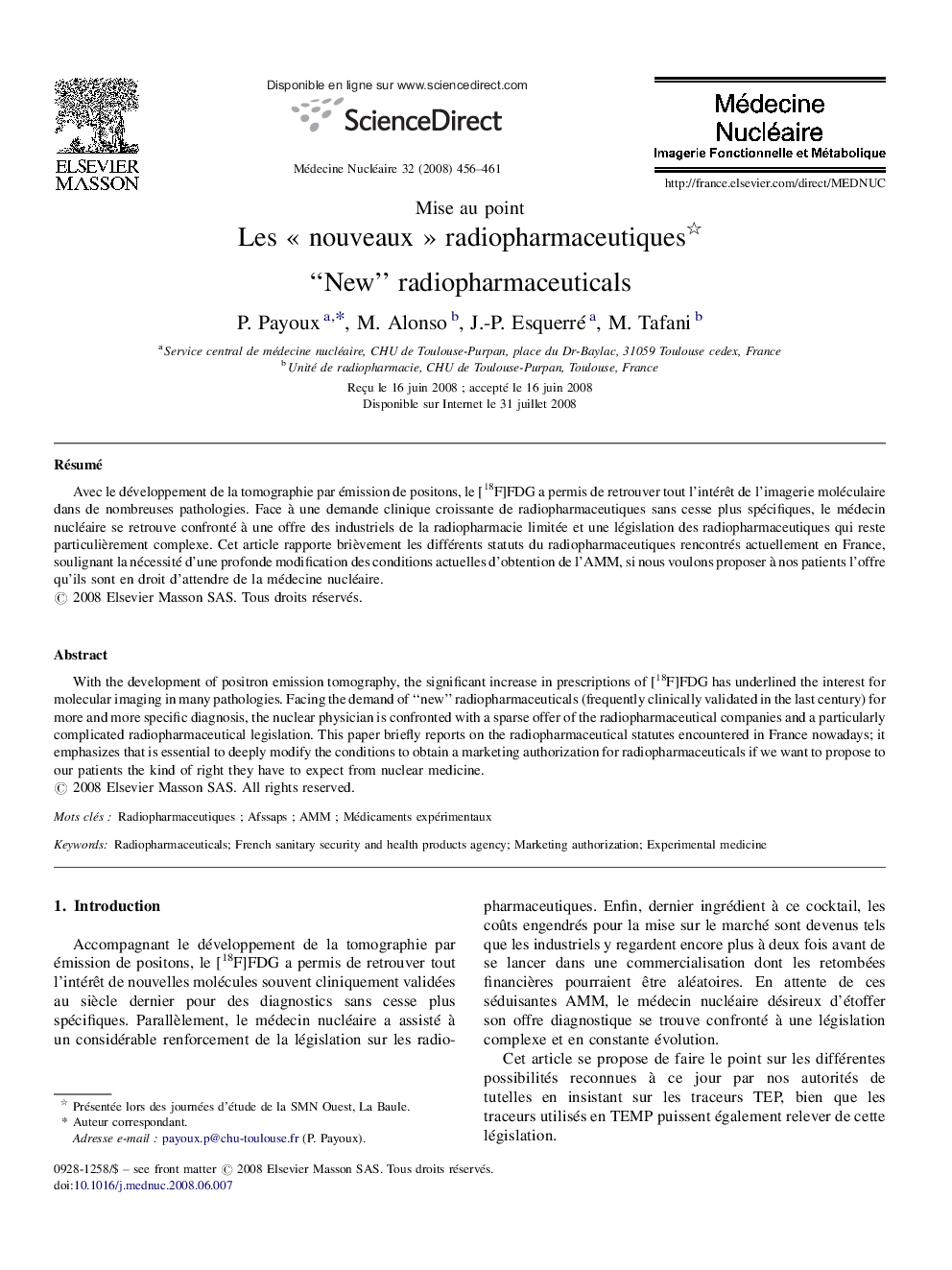| Article ID | Journal | Published Year | Pages | File Type |
|---|---|---|---|---|
| 4244619 | Médecine Nucléaire | 2008 | 6 Pages |
RésuméAvec le développement de la tomographie par émission de positons, le [18F]FDG a permis de retrouver tout l’intérêt de l’imagerie moléculaire dans de nombreuses pathologies. Face à une demande clinique croissante de radiopharmaceutiques sans cesse plus spécifiques, le médecin nucléaire se retrouve confronté à une offre des industriels de la radiopharmacie limitée et une législation des radiopharmaceutiques qui reste particulièrement complexe. Cet article rapporte brièvement les différents statuts du radiopharmaceutiques rencontrés actuellement en France, soulignant la nécessité d’une profonde modification des conditions actuelles d’obtention de l’AMM, si nous voulons proposer à nos patients l’offre qu’ils sont en droit d’attendre de la médecine nucléaire.
With the development of positron emission tomography, the significant increase in prescriptions of [18F]FDG has underlined the interest for molecular imaging in many pathologies. Facing the demand of “new” radiopharmaceuticals (frequently clinically validated in the last century) for more and more specific diagnosis, the nuclear physician is confronted with a sparse offer of the radiopharmaceutical companies and a particularly complicated radiopharmaceutical legislation. This paper briefly reports on the radiopharmaceutical statutes encountered in France nowadays; it emphasizes that is essential to deeply modify the conditions to obtain a marketing authorization for radiopharmaceuticals if we want to propose to our patients the kind of right they have to expect from nuclear medicine.
